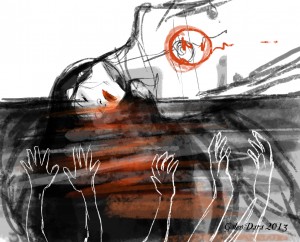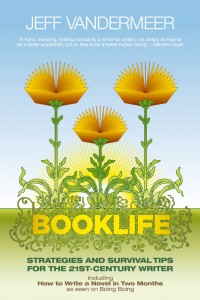During a #SFFWRTCHT last month I was asked this question: “How long does it take you to do a piece from first line to finish?”* I responded with something vague about always being amazed at how quickly some pieces come together and how slowly others do. And that’s completely true: The time from first line to finish varies enormously depending on the illustration project. (Even more tricky to explain is why an illustration that only took an afternoon to complete may be more successful than one that took several weeks). One of my art professors used to answer: “40 years and three weeks” when people asked how long a painting took (the sum of his painting career to that point and whatever time the specific painting required), which was a witty nod to how much more than just hours goes into an art piece. But as a freelancer, knowing how long a project took is pretty important career information. So I’ve been working on that.
Usually I have several projects all going on at once. On rare moments it all comes together like this**, but often it feels more like this. Last year I started using kanbanpad to help keep track of my progress on various illustrations. I had queues such as “Not Started” “Ideation” “In Progress” and “Finished”. Recently it’s become necessary to revise how I keep track of stuff in order to avoid over-committing myself: I now have a Google doc with a whole year laid out month by month listing jobs already committed to, so at a glance I know if I can take on another project this month or that month. Also I’ve also started using spreadsheets to detail each month even more closely: When a job is started, when it is finished, (how many hours it took). Even things like print sales, art shows entered, (blog posts written). This is pretty new, the methods still being tweaked, but I’m interested in seeing what trends may reveal themselves.
As the at-home parent, my work schedule fits around my son’s school schedule and between general household management needs. And those work hours are not all art making: I spend a lot of time reading through the stories I’ll be illustrating, prepping digital canvases, collecting and/or shooting reference images. Not to mention just “paperwork” type stuff: keeping financial records up to date, monitoring correspondence, posting recent work, promoting projects, occasionally revamping my websites. I recently spent several hours finally writing up my own artist/client contract for new clients and it took me an entire day to prepare art for shipping to an out-of-town show.
While I have not yet started keeping track of exactly how many hours a piece will take from start to finish, I do know that I can finish about 4-5 illustration jobs per month and still be sane and pleasant to live with. (Which is really good to know.) Here’s a few other things I’ve skimmed from the webs that apply to the topic at hand:
- John Scalzi’s advice to writers about money (and time) management***
- Kat Howard steals sand from the hourglass
- Theodora Goss on finding the energy to create
- 6 cool tools for tracking your time
- Who Does She Think She Is, a documentary about working artist mothers
- (Whew, anyone else wish they were one of the sleepless elite?)
- And this interview with creatives talking about their time management methods:
*thank you Paul Weimer for asking the question!
**thank you Bo Bolander for lovely herd dogs.
***thank you Remy Nakamura for pointing me to Scalzi’s article.






